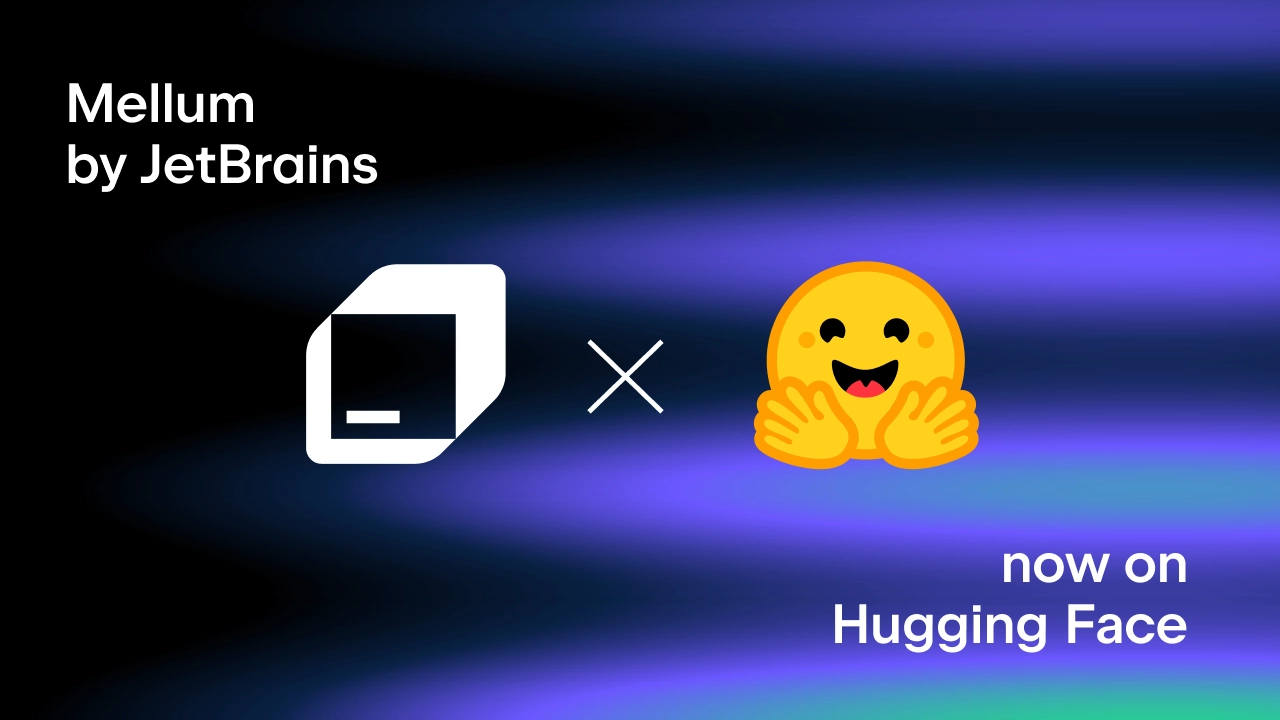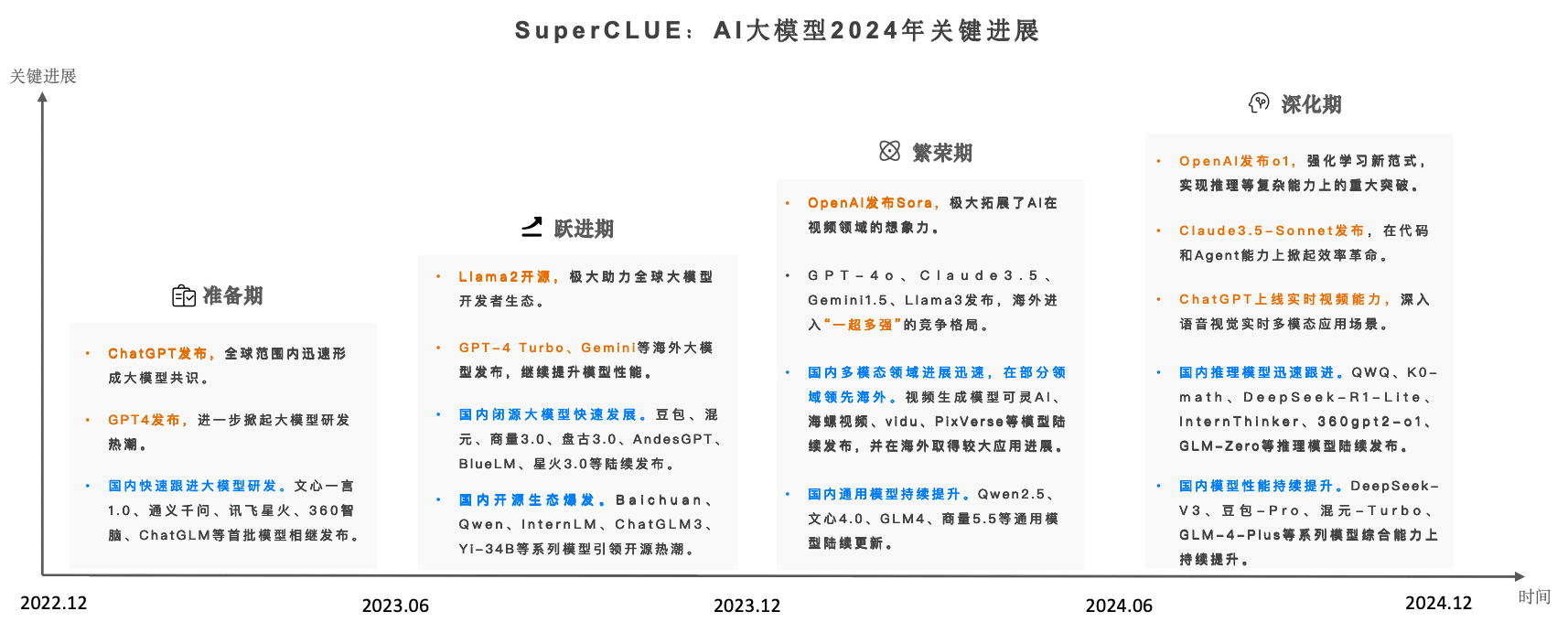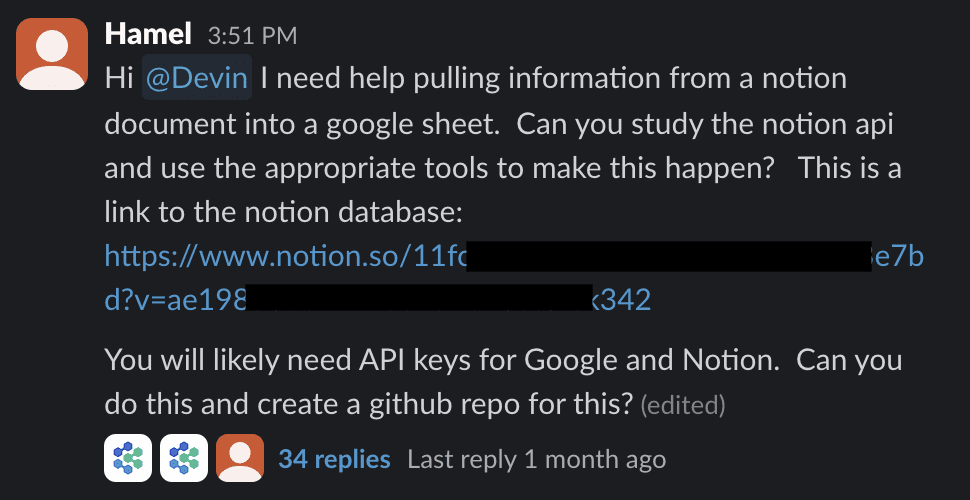Basic universalization of AI education in primary and secondary schools by 2030? How does the education sector see this
reach a verdict
Domestic primary and secondary schools from top to bottom issued documents to popularize artificial intelligence education, the "industry" maturity is the examination, promotion, training, and finally become the game of the rich.
It may be that following the example of the United States and going straight to the experimental stage of science popularization or learning from Japan that gives a clear guided learning framework may be a better way to practice initially.
Not long ago, inscience and innovation circleHere's the big news. The Department of Education has issued a letter making it clear that"Basic universalization of AI education in primary and secondary schools by 2030"The
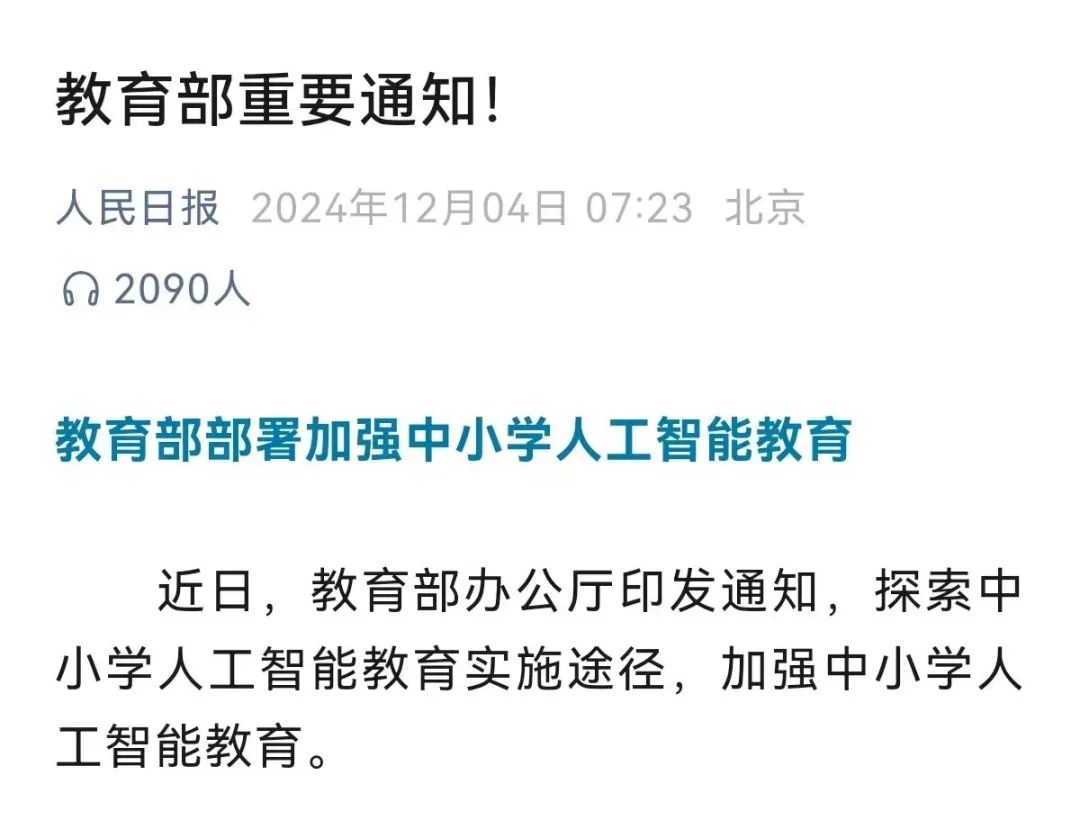
Parents should have heard of the term "Artificial Intelligence". ChatGPT4.0, Sora model and AlphaGo's victory over Ke Jie, all of which have sparked the tech world in the past few months, are all about artificial intelligence, or AI.What does this have to do with our children? How does it relate to our children's education? In today's article, we dig deep into some of the information gap behind the Ministry of Education's documents to help parents keep pace with frontline education in the first place.
What are the signals to parents from the documents released by the Ministry of Education
The original text of the document is as follows, with the key parts marked in red for parents' convenience 👇

Let's briefly run through what this document conveys that is relevant to us as parents.
focus on
1.Primary and secondary schools across the country will next carry out artificial intelligence education programs.
2. AI learning will continue from elementary school all the way through high school:
Lower elementary school grades focus on sensing and experiencing artificial intelligence technology
Upper elementary and middle school levels focus on understanding and applying artificial intelligence techniques
High school level focuses on project creation and cutting edge applications
3. Artificial intelligence literacy may be incorporated into the comprehensive literacy assessment system for students.
4. Next, education departments and schools will vigorously carry out AI-related tournaments.
5. The "Secondary School Talent Program" will increase the selection of talents in the field of artificial intelligence.
To put it bluntly, this is a new educational infomercial, just as programming and robotics were some years ago, only this time the protagonist has been switched to artificial intelligence.
In the past few years, parents should have the feeling that many resources are tilted to "mathematics, science, science and creativity", both in the promotion policy and the selection of national talents.
Artificial intelligence also belongs to the category of "science and innovation", that is to say, it is closely related to the "white list" and the "science and technology specialists".
From the "secondary school students in the program of excellence" can be seen, the future of talent selection, with artificial intelligence expertise in the children will become the meat and potatoes.
And, judging from the document's mention of "building a systematic curriculum system" and "promoting a large-scale supply of teachers," we're guessing that the status of AI will be at least equal to that of programming and robotics, and maybe even higher.
So as parents, do we need to treat "artificial intelligence" as a formal subject?
Not so far.
The notice only encourages the incorporation of AI education into local and school-based curricula, after-school service programs and study practices, and for the time being does not say that it will become a separate subject.
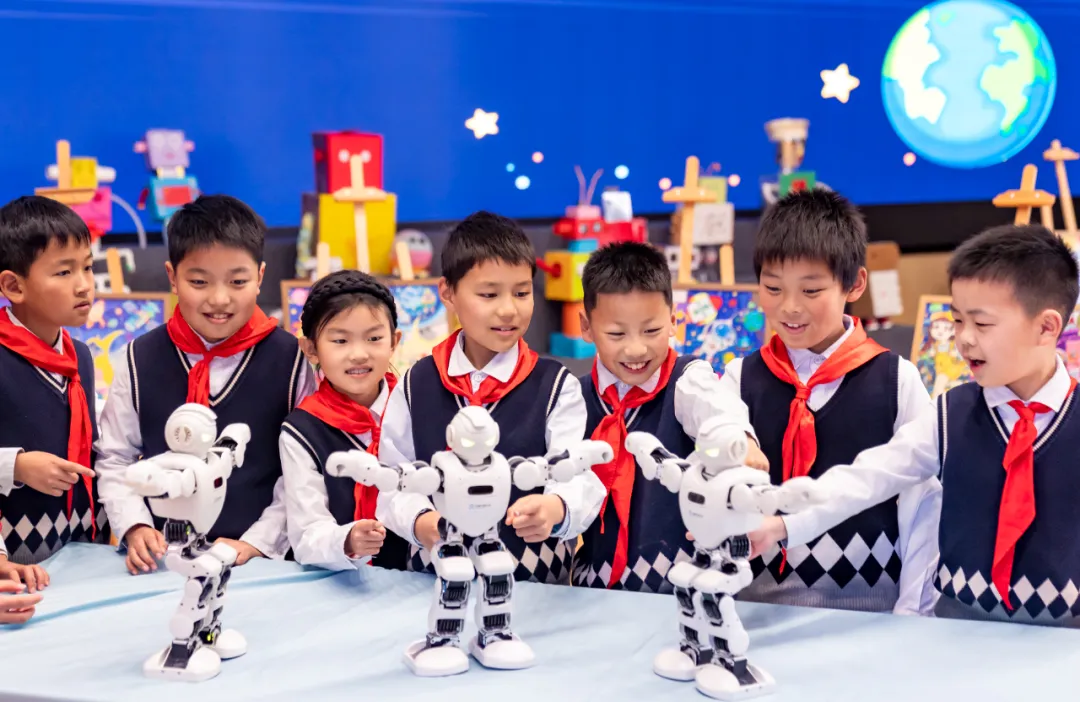
As for, in the future, whether our country will integrate AI teaching into the main subjects of language, mathematics and English subjects, and establish a complete AI learning system like foreign schools, this is all an afterthought.
However, it is foreseeable that AI will gradually be combined with other disciplines, and there will definitely be more and more scenarios in which children will utilize AI in their future learning lives.
It's a change in education in the age of AI, and with our children in the middle of it, artificial intelligence is an inescapable part of the equation.
A little more of our own thoughts.
Although the national level has been promoting AI education into the school, but considering various factors, the policy to land on the head of each child is a very large and long project.
Leaving aside the fact that AI in schools needs to be backed by substantial funding, the only information technology teachers who have anything to do with AI are currently in short supply, not to mention the number of educators who can be proficient in AI, and how many of those can there be in the country?
If you wait until your school offers a course on the subject, it may be a little late for your child to learn about exposure to AI.
We suggest that parents, if they have the means, can guide their children to learn more about AI and experience AI in their lives, one step ahead of their peer families.
Ps: in the last part of the article we provide some home AI learning suggestions to consider
Programming and robotics programs for young kids don't count as full-fledged AI
Many parents have confusion about what artificial intelligence is. Is it just robotics, is it just programming classes?
After all, in real life, we often see the news of artificial intelligence will appear along with robots and programming, especially in science fiction movies, the image of intelligent robots has been deeply rooted.
Does robotics and programming, then, represent artificial intelligence?
Our answer: the programming/robotics program your child is taking has some correlation with AI, but it does not fully represent AI.
Let's do an easy-to-understand and comprehensive analysis about the relationship between artificial intelligence, robotics, and programming.
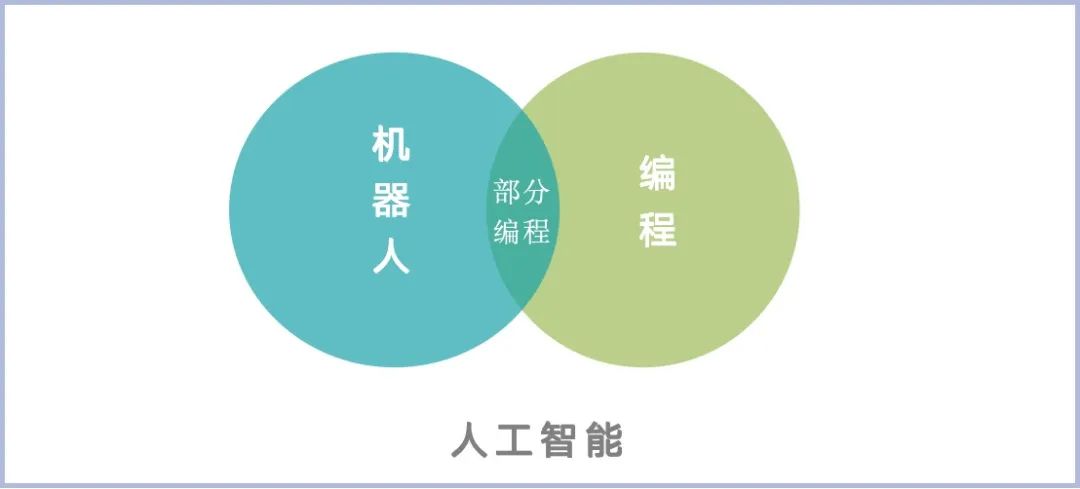
A diagram of the relationship between the three.
(1) Definition of Artificial Intelligence
Artificial intelligence consists of two parts, artificial and intelligent.
Artificial (Artificial) refers to anything created by humans and Intelligence (Intelligence) stands for the ability to understand, think, learn, and reason.
Combined together, the two can be understood to mean that something designed by humans that can understand, think, learn, and reason like a human being is called artificial intelligence.
The thing created can be a physical object, such as a robot or a car, or it can be a virtual thing, such as a large model.
So how do you make this thing have human intelligence? It's going to be through algorithms in programming.
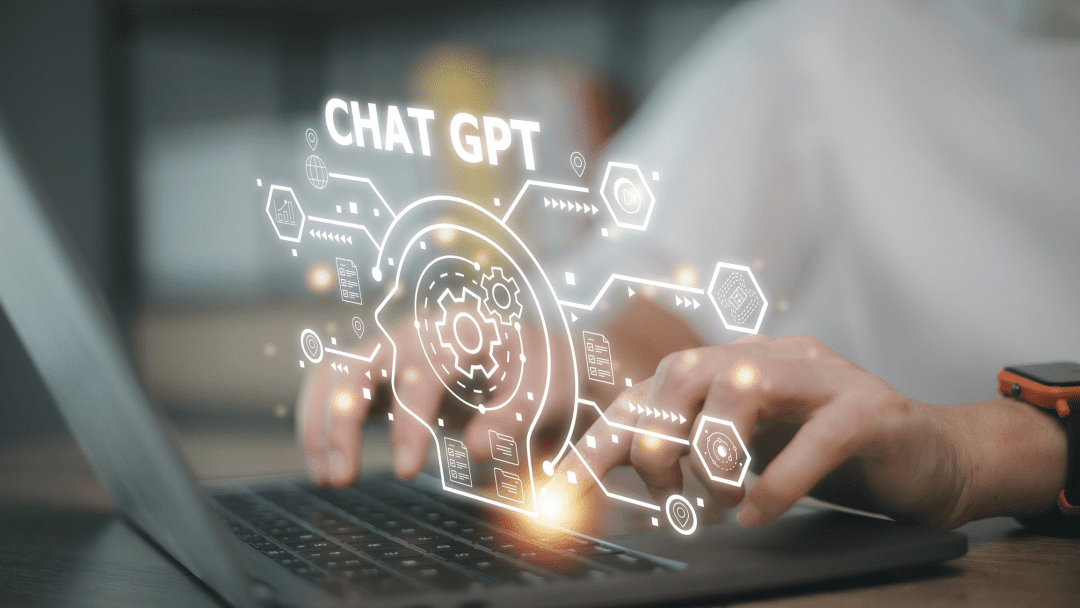
(2) Artificial Intelligence andRelationships in Youth Programming
Programming has a broad scope, and the programming courses currently available on the market focus on developing children's logical thinking, problem solving skills, algorithm design skills, etc.
Through programming classes, children can learn to break down complex problems into multiple simple steps and then use programming instructions to realize them, which is a basic programming mindset training.
It is not AI in the full sense of the word, but it is the underlying foundation of thinking needed for AI.
If the child is interested in AI development later in life and wants to learn more, he or she will need a certain foundation in programming.
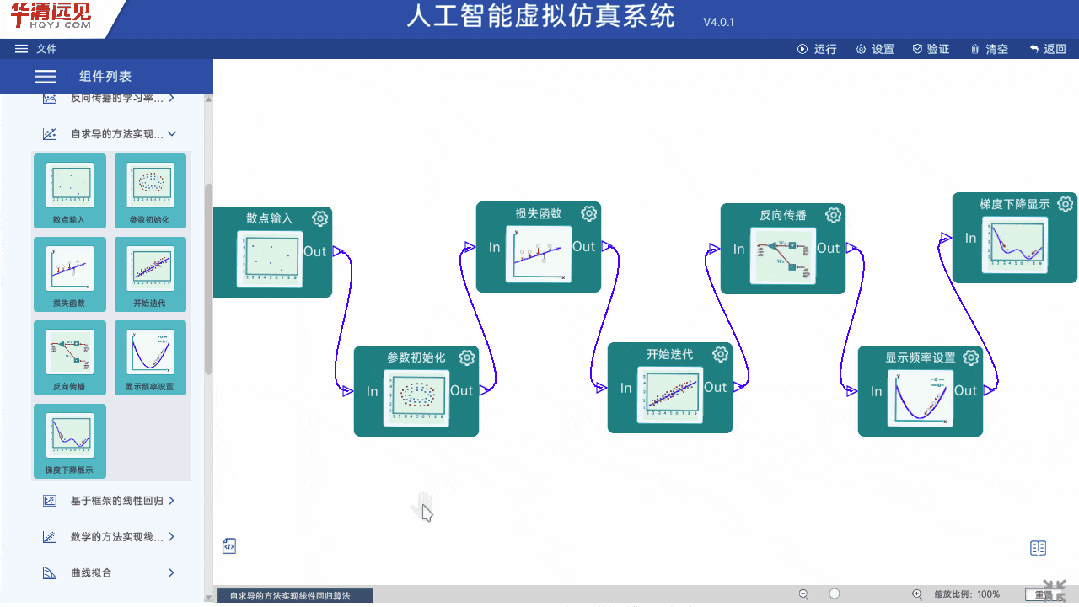
AI project (license plate recognition) based on Python creation.
(3) Relationship between artificial intelligence and robotics programs
Robotics courses typically involve robot building and programming controls that are programmed to allow the robot to perform specific tasks, such as allowing the robot to autonomously navigate and avoid obstacles in a maze.
This combination of hardware and programming exemplifies the interaction of the physical and digital worlds in artificial intelligence;
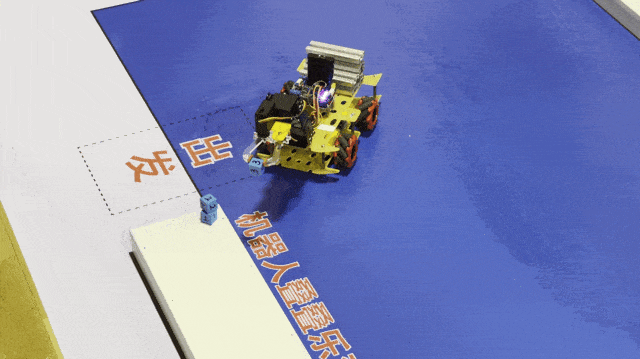
Program commands to get the robot to complete the task of stacking cubes.
However, this is only a simple application scenario of AI in robotics and cannot represent full AI.
An example.
The child's robotics program will involve the learning and application of sensors, such as infrared sensors, ultrasonic sensors, etc., to enable the robot to sense information about its surroundings, which is analogous to the perception layer in artificial intelligence;
However, AI perception is not limited to simple sensor data acquisition, but also includes high-precision recognition and understanding of complex images, speech and other information.
Therefore, sensor applications in the robotics program are only the initial perceptual foundation.
(4) To summarize.
First, true AI systems are "smarter".
Currently, most of the programming and robotics courses that children are taught operate under preset programs and rules with a relatively low level of intelligence.
For example, artificial intelligence can be trained with large amounts of data to automatically recognize a variety of different image contents, whereas a robot programmed and controlled by a child may only be able to recognize a limited number of objects or scenes.
Second, AI learning is more complex and difficult.
Artificial Intelligence covers some of the knowledge of robotics and programming, but also other areas of knowledge (machine learning, deep learning, natural language processing, computer vision).
And programming and robotics courses only cover some of these basics and simple applications.
Parents can think of it this way, with the learning experience of programming and robotics, their children will have a deeper understanding of artificial intelligence;
Similarly, to learn artificial intelligence, you need some knowledge of programming and robotics as a foundation.
Two lines of the reliable AI race: whitelisting and institutionalization
Next we present some AI-related tournaments for youth.
Artificial Intelligence competitions, both on the whitelist and in the system, have always existed, except that in past years the number of entries would have been smaller than in robotics and programming.
But after the state issued a notification, it's possible that these AI competitions will start getting hot next.
We generally recommend two routes on how to choose a sci-fi tournament - whitelisted tournaments and institutional tournaments - and the same is true for AI competitions.
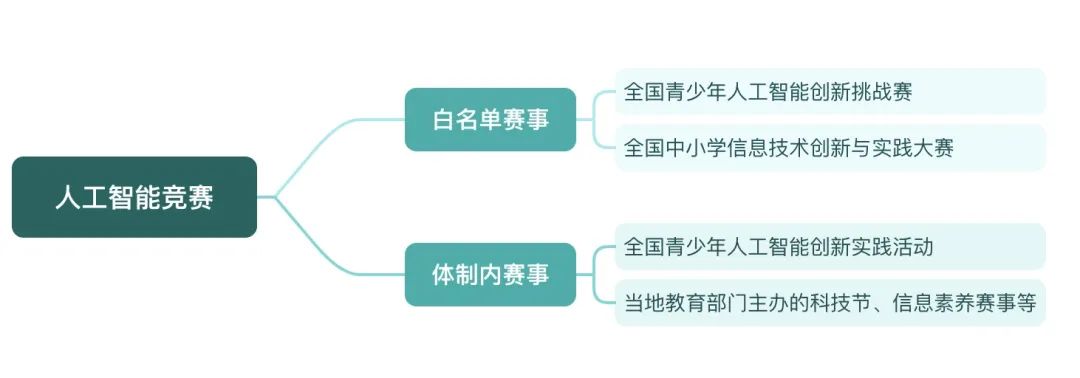
(1) Whitelisted events
National Youth Artificial Intelligence Innovation Challenge
All competitions in this event are centered around artificial intelligence. Each year there is a specific theme and students are required to create innovative designs and participate in competitions individually or in groups based on knowledge and rules related to artificial intelligence, using knowledge related to robotics, electronics, information technology, mechanical engineering, microcontrollers and programming.
The tournament is divided into four directions, with the robotics and programming events, which are different from the regular tournaments, focusing more on intelligent applications, making the events more difficult.
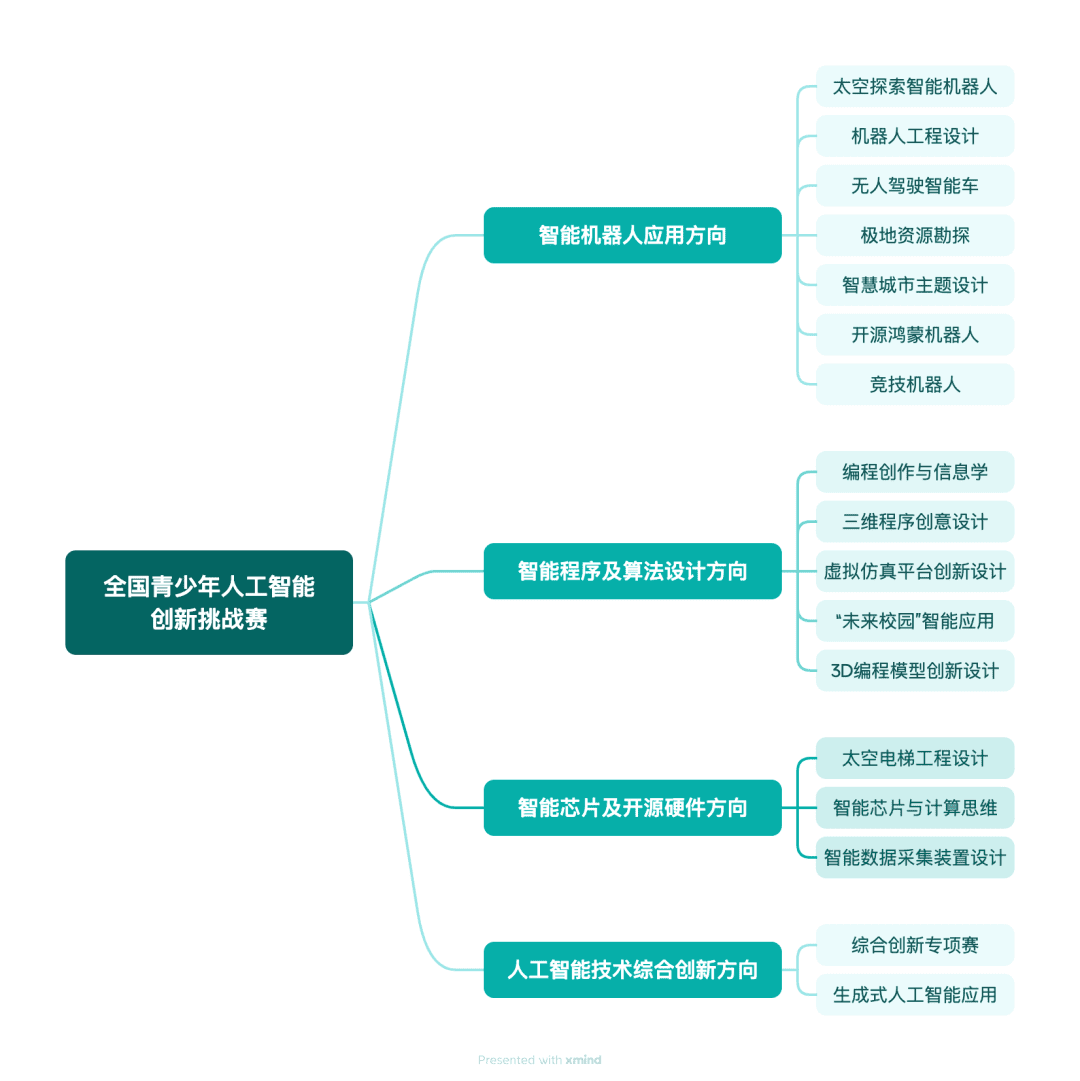
National Primary and Secondary School Information Technology Innovation and Practice Competition
The NOC is a very comprehensive large-scale science and technology event with a dedicated AI track.
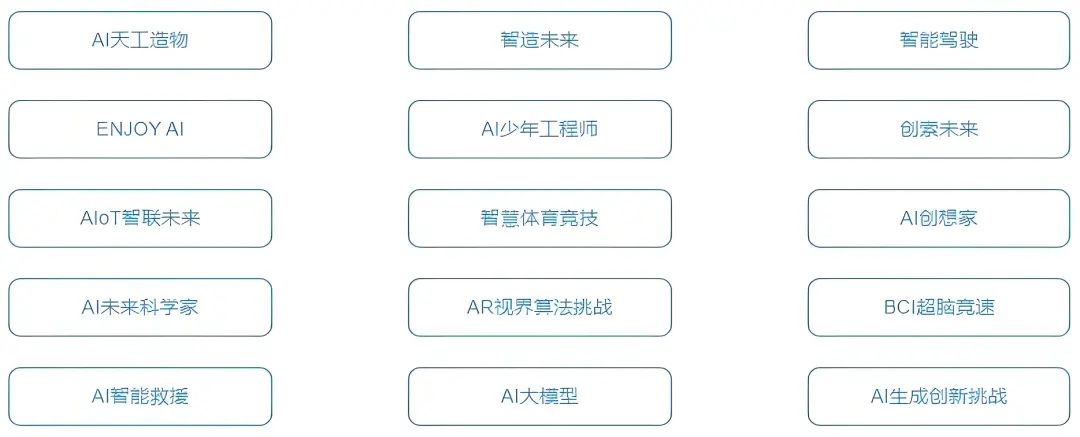
Among them are the AI Big Model and the AI Generative Innovation Challenge, both of which are new this year.
The competition is about how to apply generative AI, similar to the use of ChatGPT for iterative training, in order to accomplish the competition tasks, such as creating a work with a complete storyline, by using a large AI model.
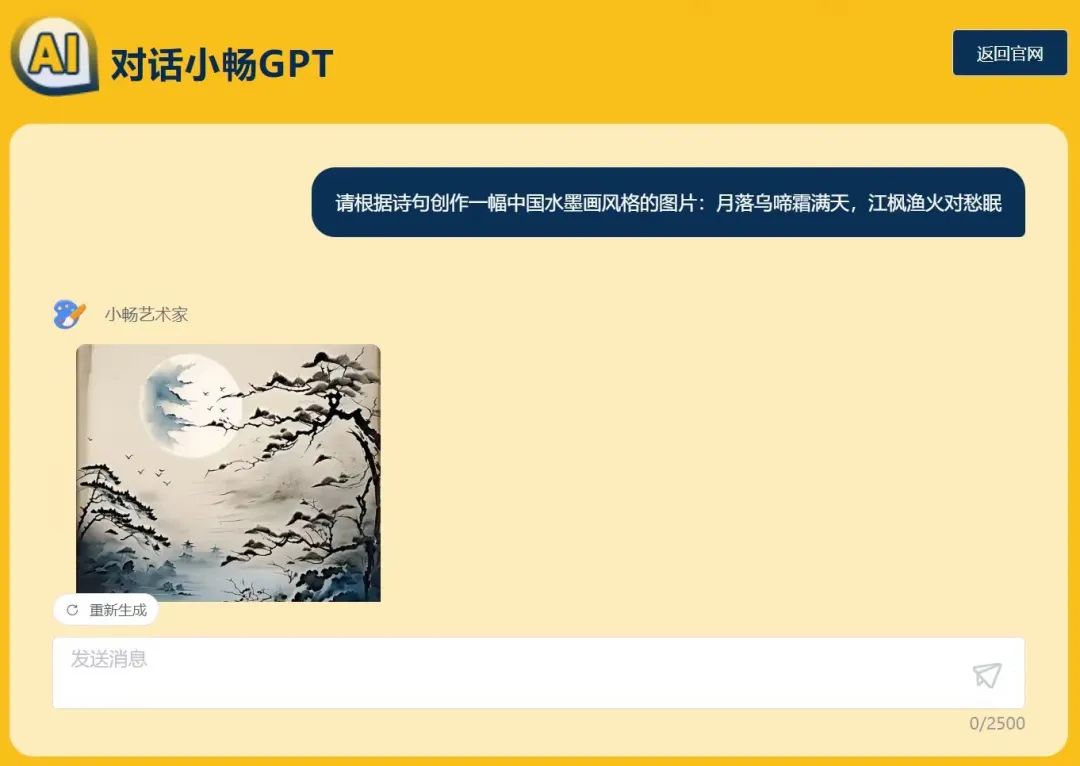
These two competitions do not require knowledge of programming or robotics, so if your child normally uses AI models, you can give them a try.
There are also some events in the design track that are related to artificial intelligence, such as creating works through different combinations of AI with 3D printing, animation, open source hardware, and more.

(2) Institutional races
"National Youth Artificial Intelligence Innovation and Practice" activity
The tournament is organized by the China Association for Science and Technology and the Shanghai Artificial Intelligence Laboratory, and registration is free.
tenthsAI Art Generation, AI Interaction Design, AI Engineering Practices and AI AlgorithmsFour panels.
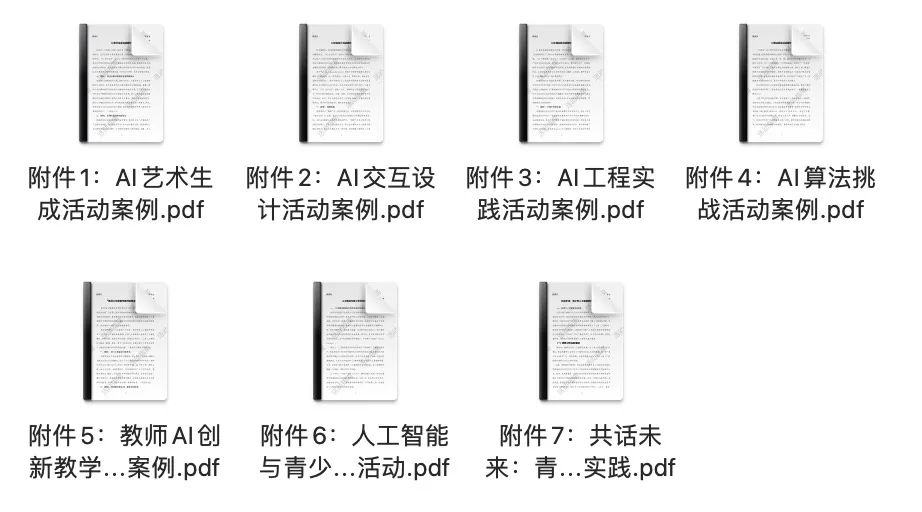
There are also some AI tournaments that will be organized by local science associations, AI societies, and school boards, which will require parents to keep up with local information.
Artificial Intelligence Literacy Enlightenment, Here's What You Can Do at Home
Finally we go back to what we mentioned at the beginning of the article, how to start your child's AI enlightenment at home.
Our children may be unnecessarily tech savvy in the AI item, but in this current era of rapid technological advancementWe at least teach our children how to live with AI and how to use it scientificallyThe
This is the most important point we want to get across to parents in this post today.
To do this, you don't need to spend a lot of money to enroll in classes, you just need to provide your child with some avenues to get hands-on, hands-on experience with AI.
We offer suggestions for learning in the following three directions:
First, rigorous AI science for youth and children
Second, AI application experience suitable for youth and children
Third, AI learning programs for young children and teenagers
01 Rigorous AI Science
① News Audio
The country is currently doing a better job is Burson-Marsteller's technology news. We have organized the relevant news about AI so far, including information to understand, cutting-edge breakthroughs, and direction discussion.
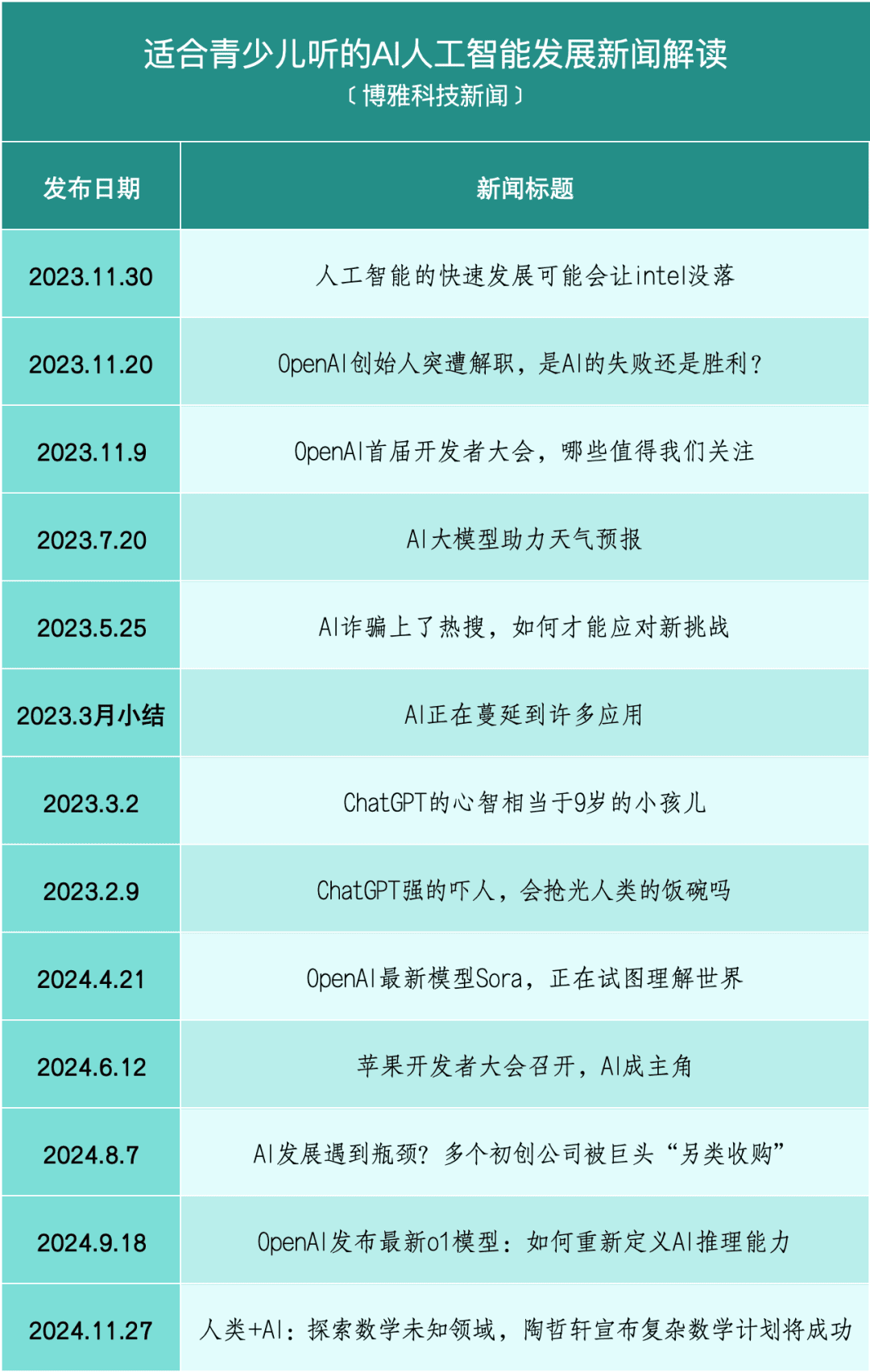
② Subscription to popular science magazines
For example, All Things Considered and Curiosity will be tracking AI on an ongoing basis.
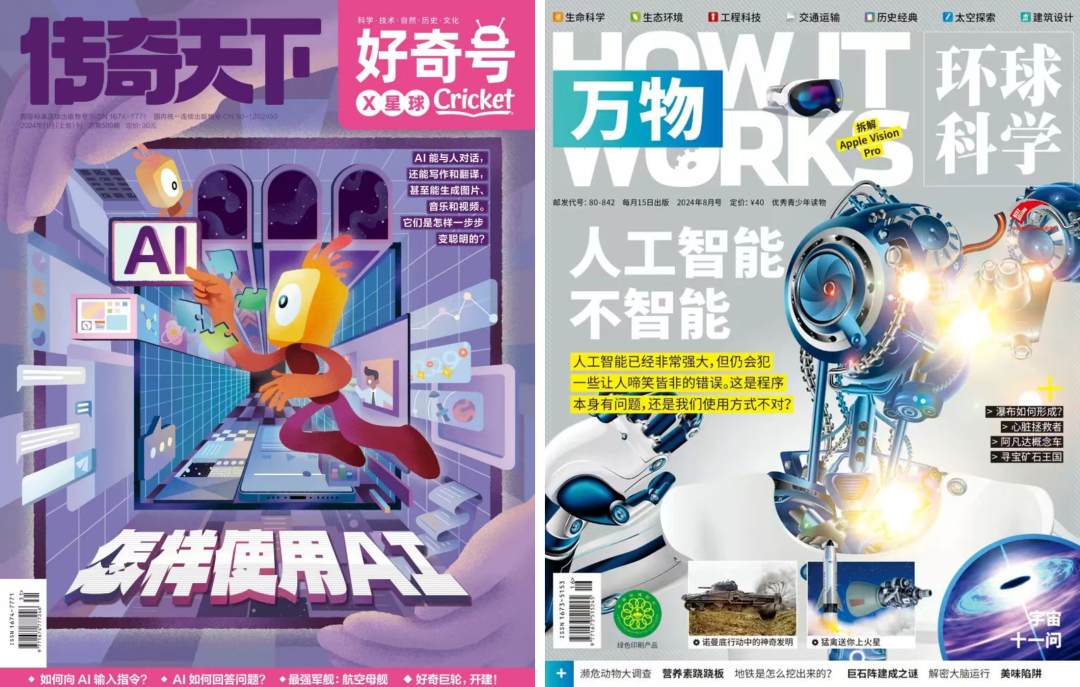
③ Special issue of science fiction
For example, the AI Intelligence series featured in Teen Time.
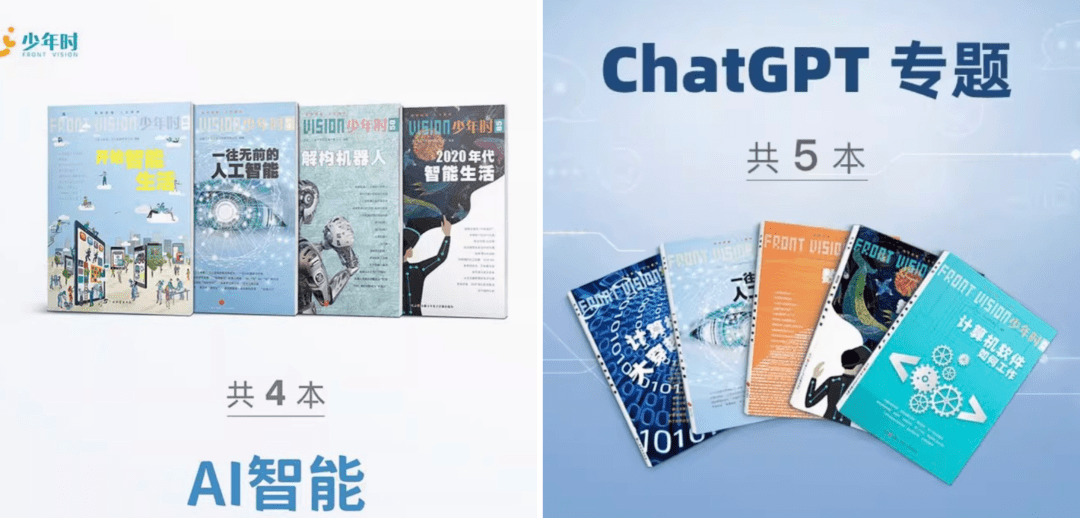
④ Watch the AI documentary
The Intelligent Age
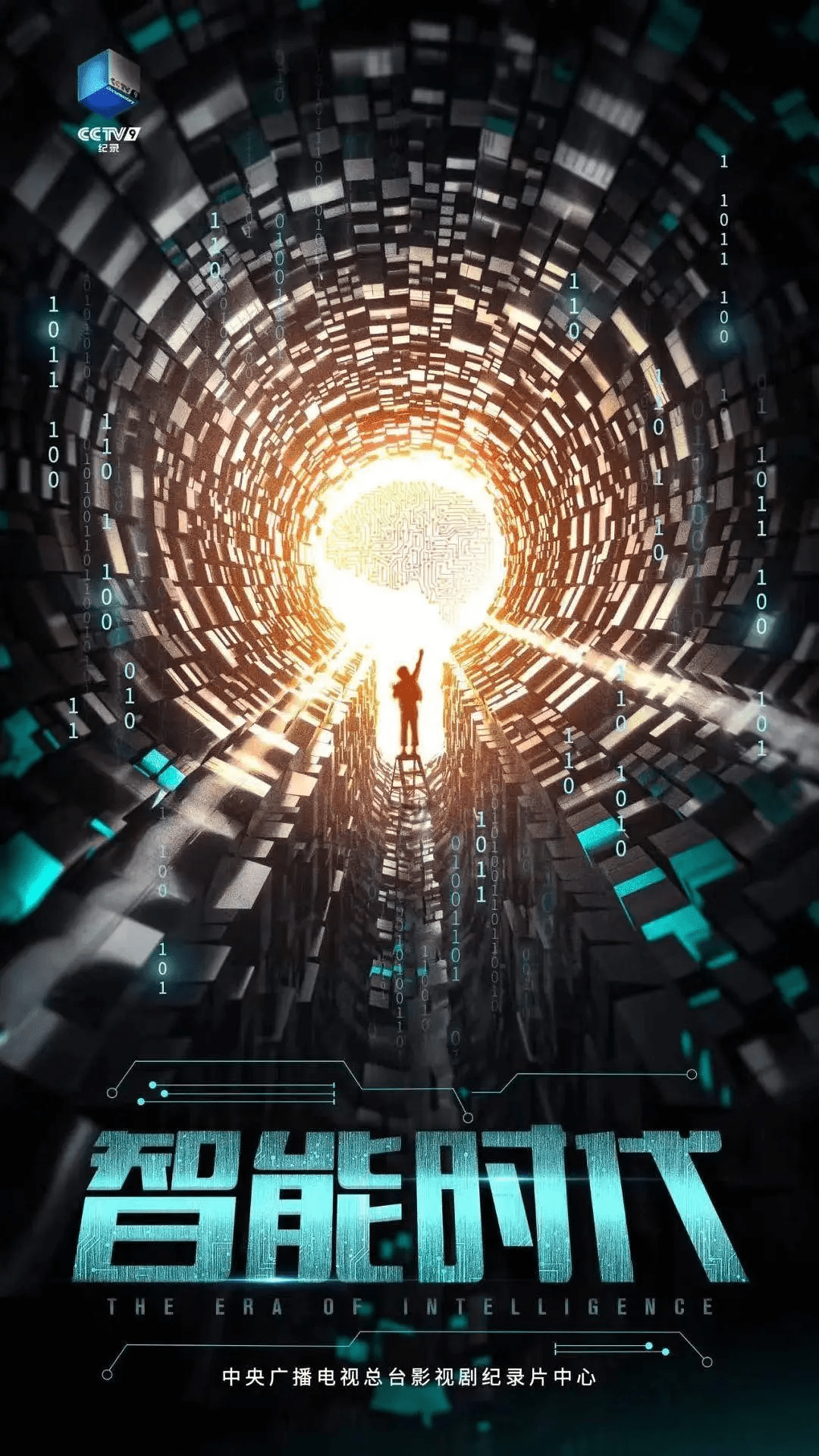
Produced by China Central Radio and Television (CCTV), the film is an international perspective on how human beings, in the process of coexistence and integration with machines, create, simulate, extend and expand their own intelligence and even challenge their own cognition.
The Age of AI
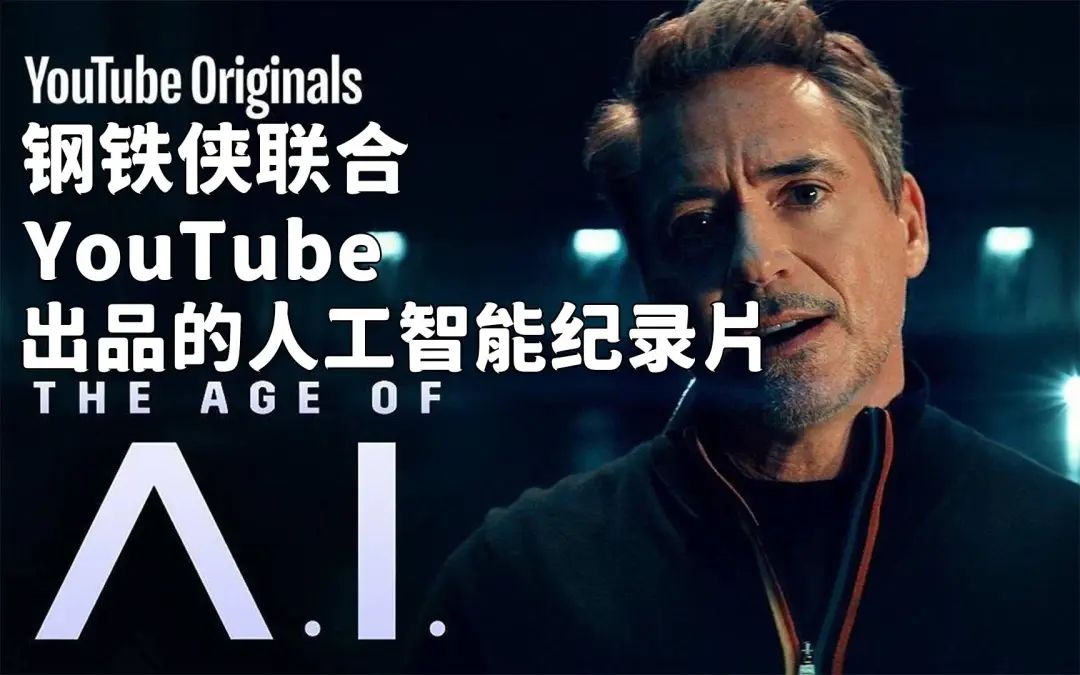
The Age of AI is a Robert Downey Jr. and YouTube documentary related to Artificial Intelligence techniques and technology, hosted and narrated by Robert Downey Jr.
The movie delves into what the impact of AI technology will be on the future productive life of human beings from different perspectives.
A Guide to Artificial Intelligence
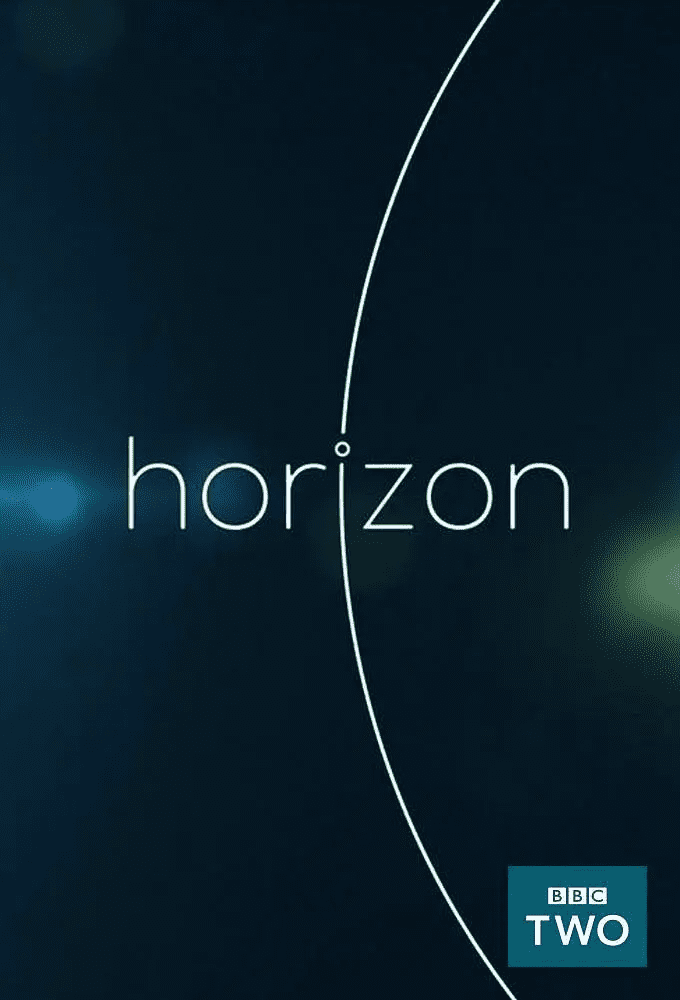
A BBC production that delves into the origins and development of artificial intelligence and its impact on human society.
02 AI Application Experience① Chatbots Based on Large ModelsChatGPT4.0(🪜)
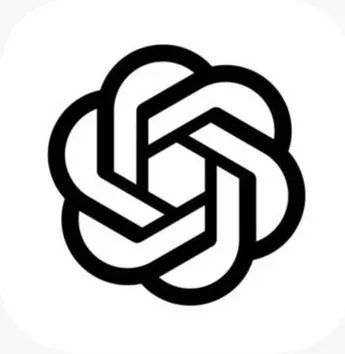
Website: https://chatgpt.com/OpenAI
Developed an artificial intelligence chatbot that can converse in Chinese.
Children are always available to help with any questions 👇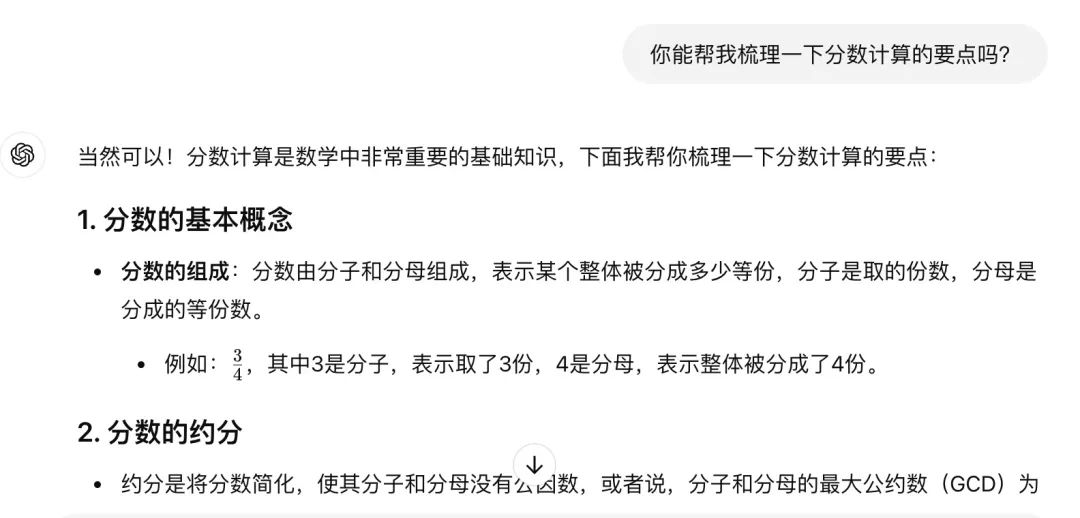
ChatGPT's strength lies in its powerful arithmetic and massive data support, so it is able to provide relatively accurate and in-depth answers on a variety of topics and domains.
If you have difficulty using ChatGPT, then you can have your child experience some of the larger models in the country that are consistent with ChatGPT in the logic of their use.
beanbag

The AI assistant developed by ByteDance is available as a web version as well as an app.
In addition to the language chat mode, Doubao has also segmented for user needs, such as Owen, an English tutor, essay correction assistant, and math test paper generator for kids.
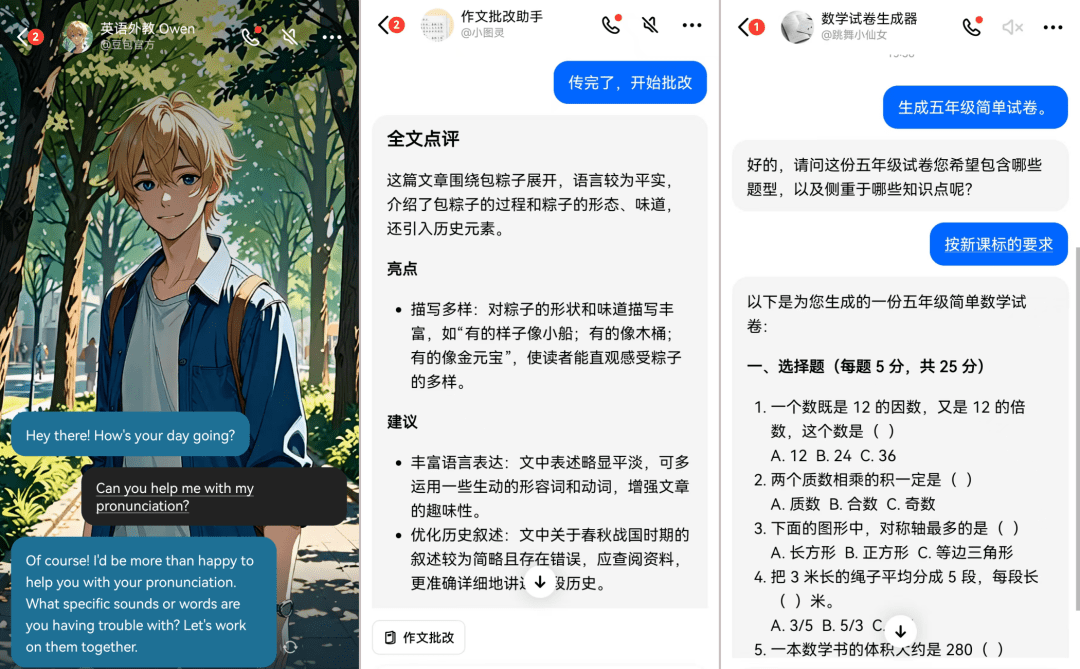
In addition to beanbags, you can also let your child experience Xunfei Starfire, Tongyi Thousand Questions, and Wenxin Yiyin, all of which are consistent in their operation.
The child enters his or her question in the dialog box and gets the answer.
For example, if a child needs to make a reading card and doesn't have a clue, they can ask a chatbot to help with ideas.
These AI big models above actually have very many derivatives, the dialog robot is just one of them, like AI painting, AI video, AI music, children can try them all when they experience the big models.
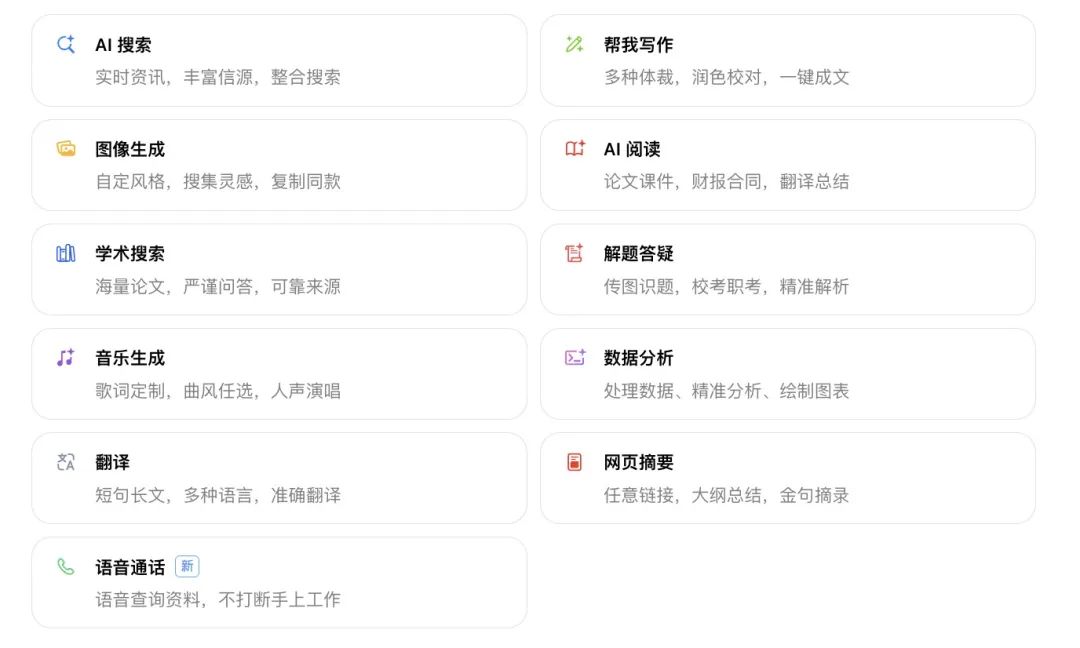
Beyond that, we'll introduce some other AI applications.
② AI Speaking Practice
Hi Echo
There is an AI speaking sparring with a special children's mode from Aristo.
In Kids Mode, you can chat freely with the robot or choose a topic to explore.
If you encounter a situation that you don't know how to do in the conversation, you can choose the dialog prompts, or you can switch the Chinese translation, which is still quite smooth to use.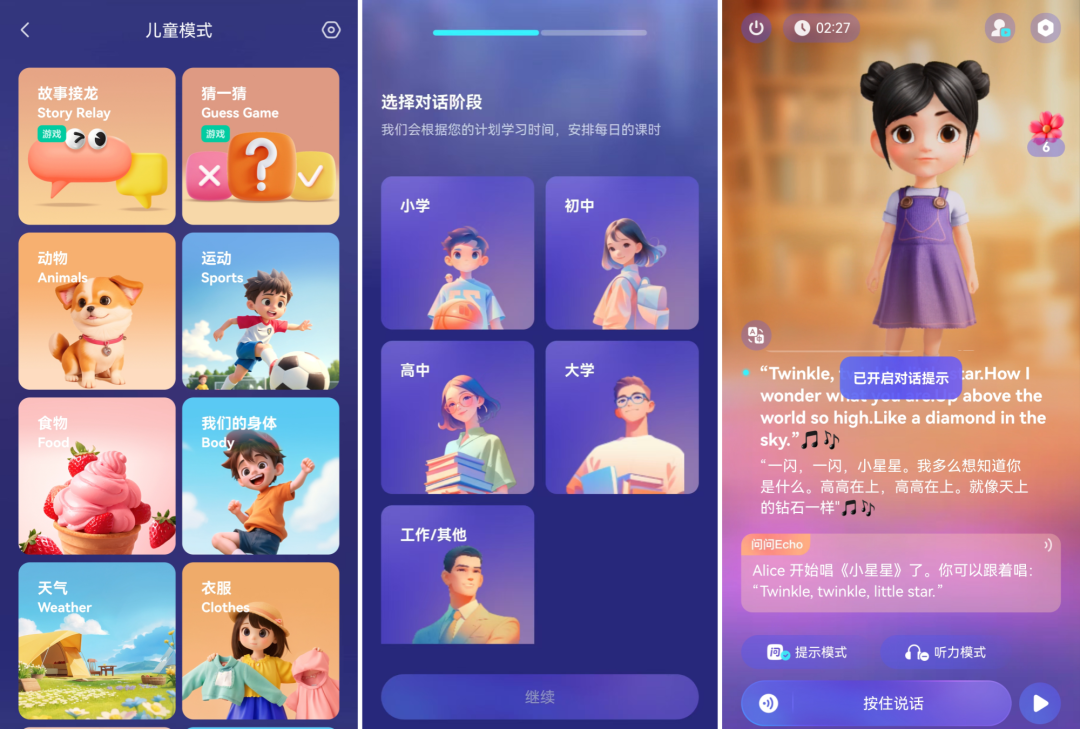
Pocket Pilot Tutor
A foreign teacher AI class for English speaking learning, which can match the school textbook and some original textbooks, as well as the corresponding theme practice.
More than a chatbot, this AI speaking is more like simulating a live interactive classroom with a foreign teacher.
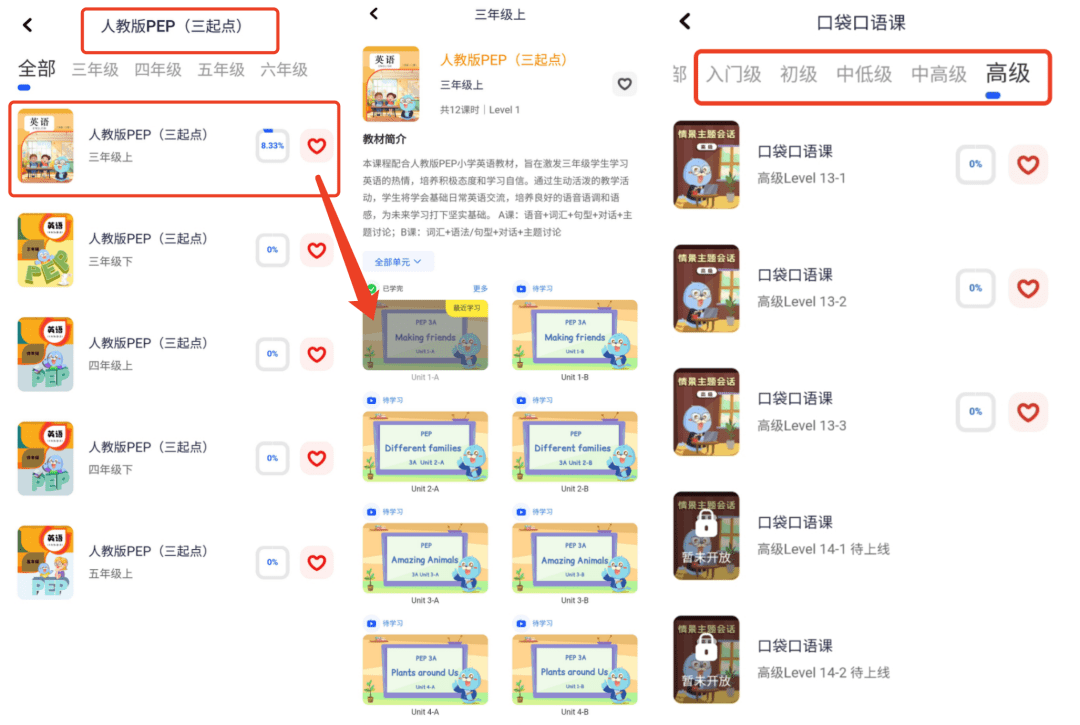
③ AI creation (video/drawing/music)
dream
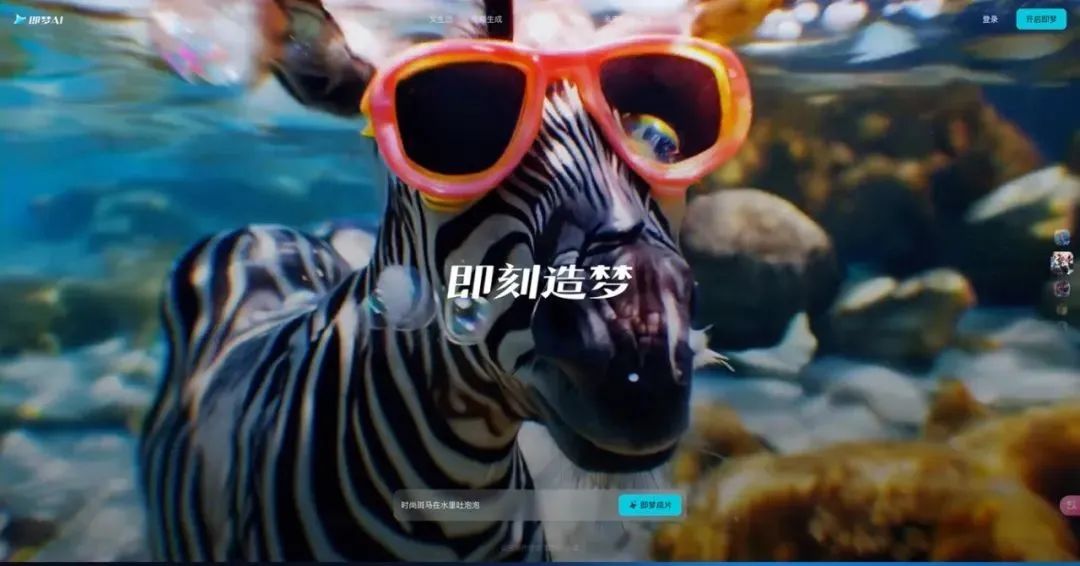
From Byte Jump, you can create pictures, videos and music.
The operation is simple, just enter the text.
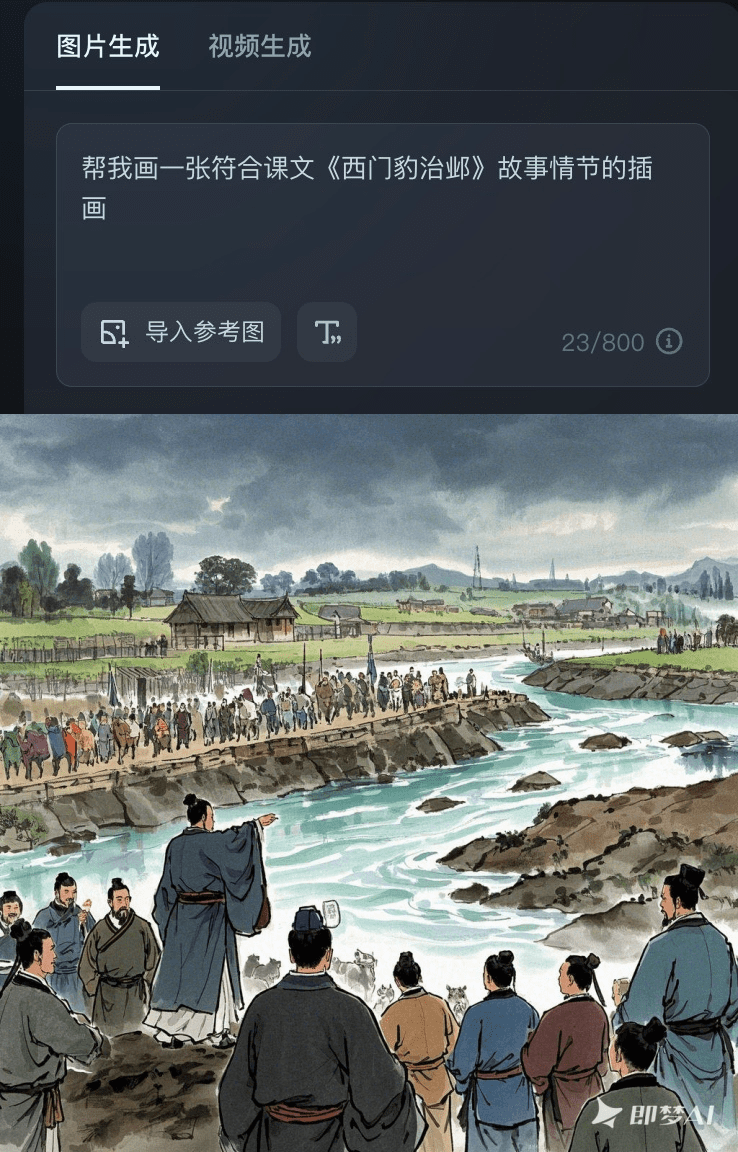
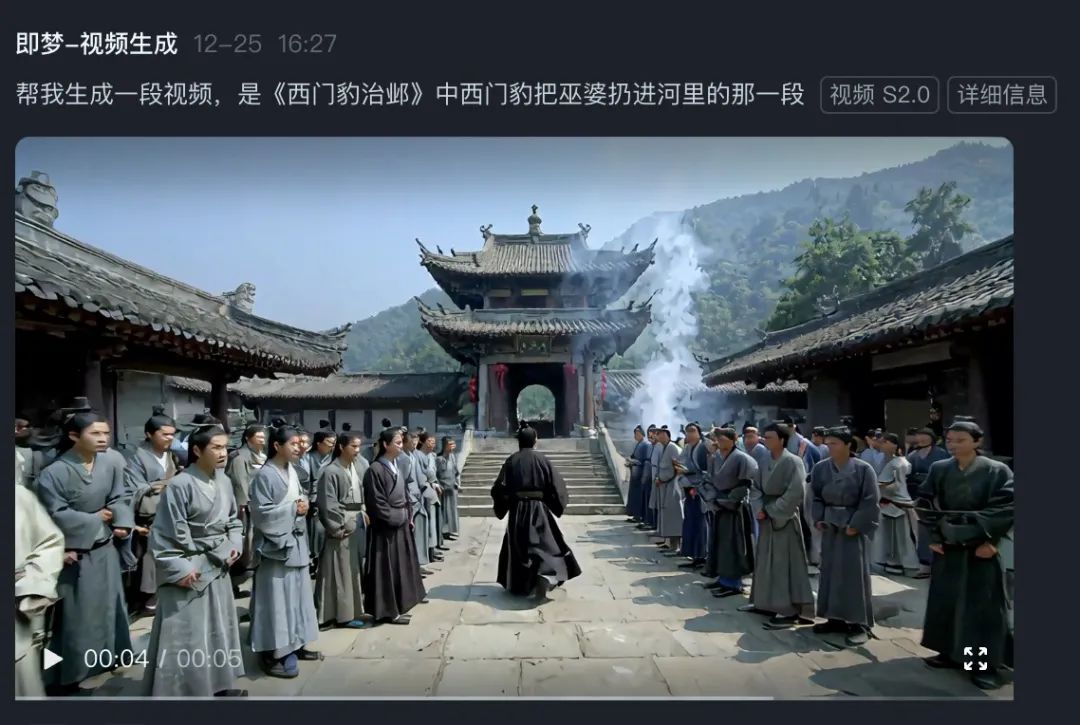
03 AI Learning Courseformula
If your child has a strong interest in AI and is willing to try it out for themselves, we found a free website for students to learn - OpenXLab Puyu Platform.
OpenXLab Urayu Platform
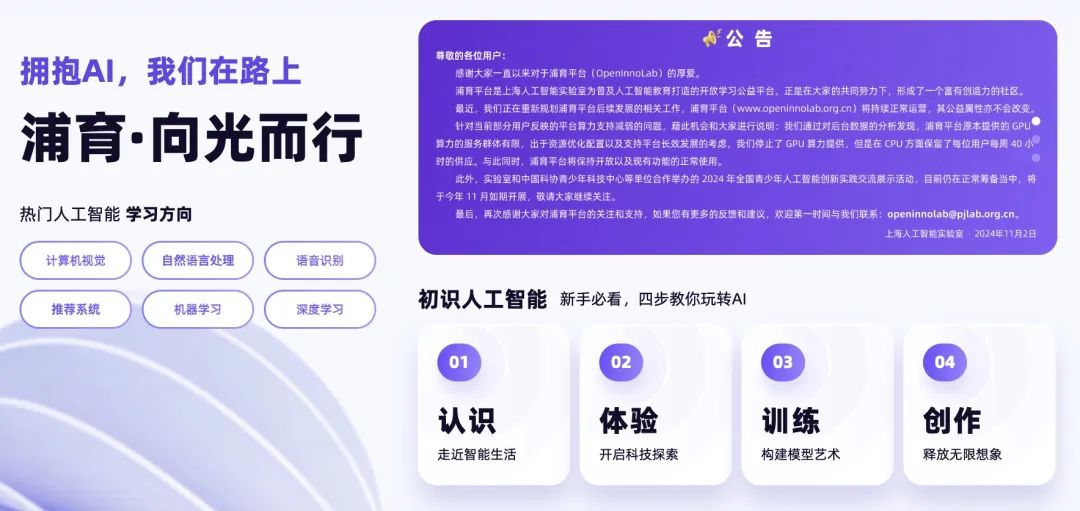
PuYu (OpenInnoLab) is an AI open learning website created by Shanghai Artificial Intelligence Laboratory for Chinese teenagers, which is currently in the free phase.
Suitable for: 6-19 years old
Address:www.openinnolab.org.cn/pjedu/home
The steps are simple, follow the website instructions, and any child in third grade and up can do this on their own.
Step 1: Email/mobile number free registration.
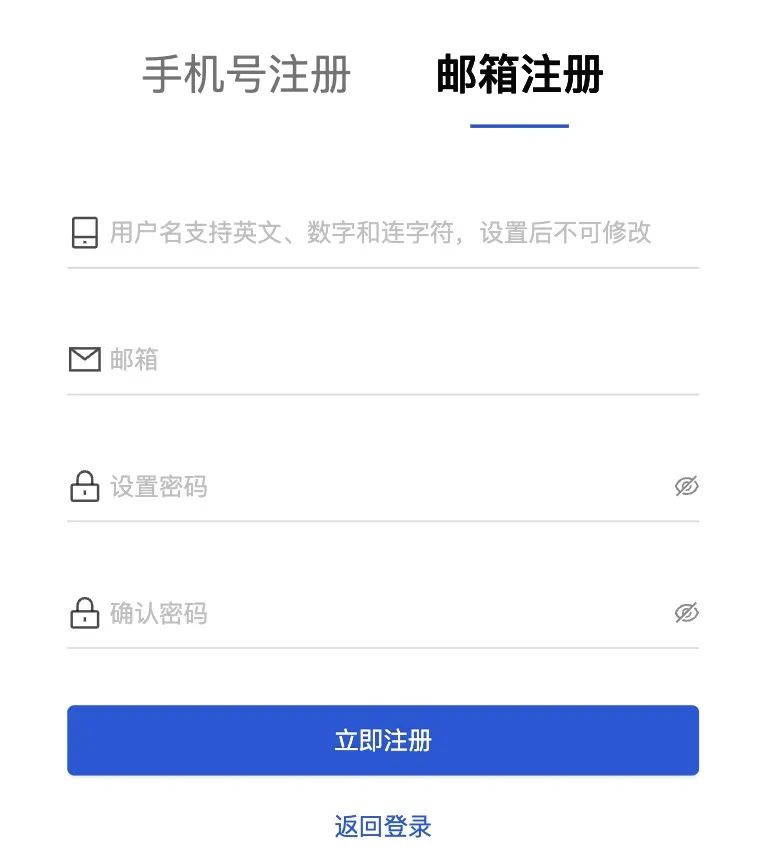
Step 2: Recognize and train AI
The website offers rich AI experiences such as image categorization, gesture categorization, voice categorization, AI painting, music conductor, face capture and more.
After the experience, the child will have a general perception of how to train AI.
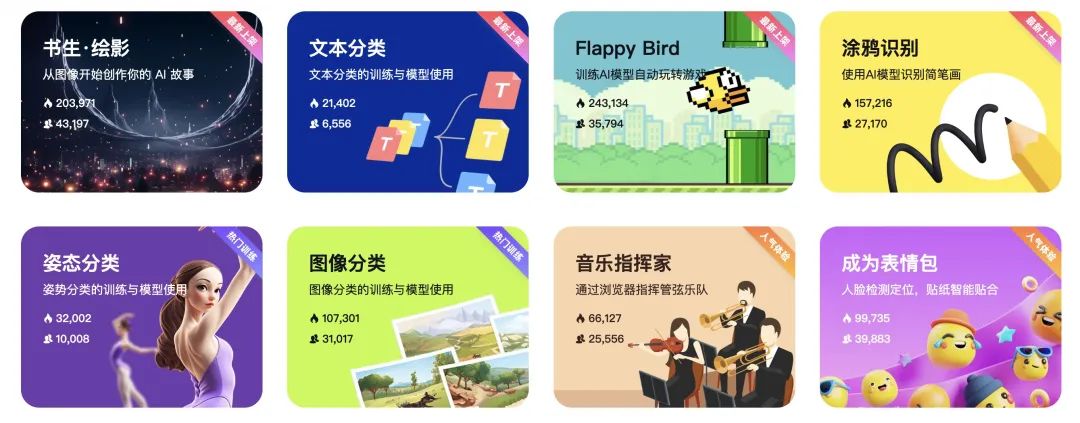
Step 3: Deep AI Learning
If your child is intrigued by AI after the experience and wants to delve deeper, the website offers introductory elementary school to advanced middle school and high school study courses, which are currently free and open to the public.
But as we said above, AI learning requires some knowledge of programming and robotics as a precursor, and if the child is already taking programming/robotics classes himself, he can be encouraged to learn it on his own.
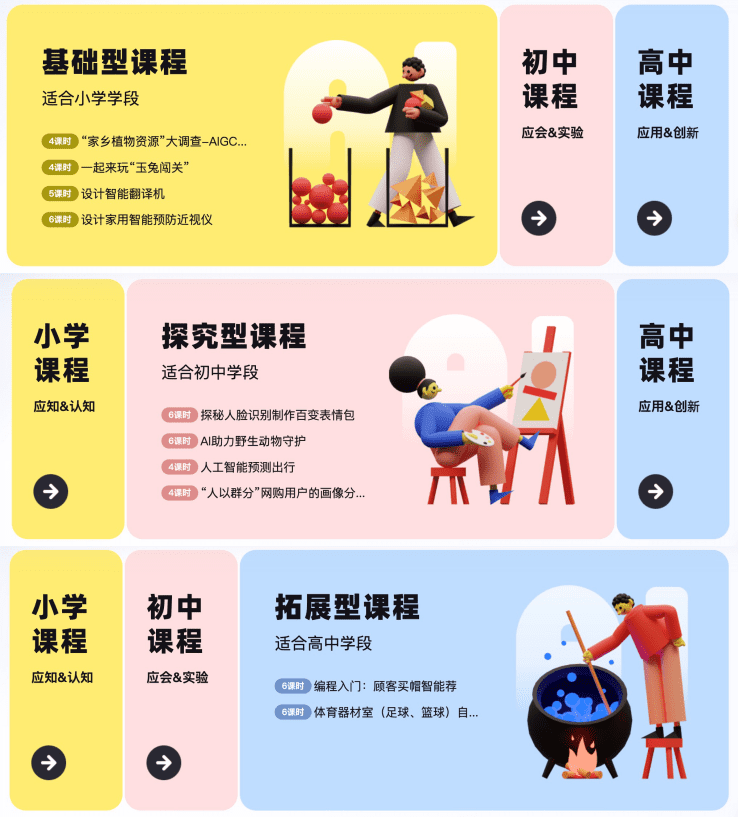
These are just a few of the tips we offer on how to initiate AI literacy in your child at home.
Obviously, the development of artificial intelligence will be a big deal for all of humanity for a long time to come, and even leaving aside the education-related part, we still want our kids to go to theUnderstand AI, use AI, master AI.
This is the AI literacy that every member of society should have in today's times.
reference
United States of America
Learn About Heuristic learning tools
Gauth Beanbag Launches American Version of "Ape Tutoring"
Class Companion Used in over 20,000 schools in the US
Japanese
The Ministry of Education, Culture, Sports, Science and Technology (MEXT) plans to publish official application guidelines based on the new draft within 2024, with the main elements of the new guidelines:
- The people-centered principle: The new guidelines make it clear that the core goal of AI is to empower humans, and that the output of AI should be used as a reference for decision-making, with the ultimate judgment and responsibility remaining with humans.
- capacity building: The guidelines emphasize the integration of AI tools with existing learning frameworks to develop students' information literacy and problem-solving skills while enhancing their critical thinking through AI-assisted instruction.
- Teachers' Roles: Teachers are seen as key players who need to not only acquire the necessary knowledge of AI, but also guide their students in the proper use of AI tools. This requires teachers to expand the boundaries of their new competencies while maintaining their traditional educational responsibilities.
- Specific application scenarios: The guide covers multiple dimensions from teacher preparation to student learning, encouraging teachers to use AI to improve their productivity and supporting students to personalize their learning through AI.
- Security and Compliance: The new guidelines emphasize legal underpinnings such as privacy protection and copyright, and require the avoidance of inputting sensitive information when using AI to ensure safe and compliant use.
- Ethics Education and Information Literacy: The guidelines require attribution when citing AI-generated content to foster student awareness of the proper use of AI tools and prevent misuse and plagiarism.
© Copyright notes
Article copyright AI Sharing Circle All, please do not reproduce without permission.
Related posts

No comments...


